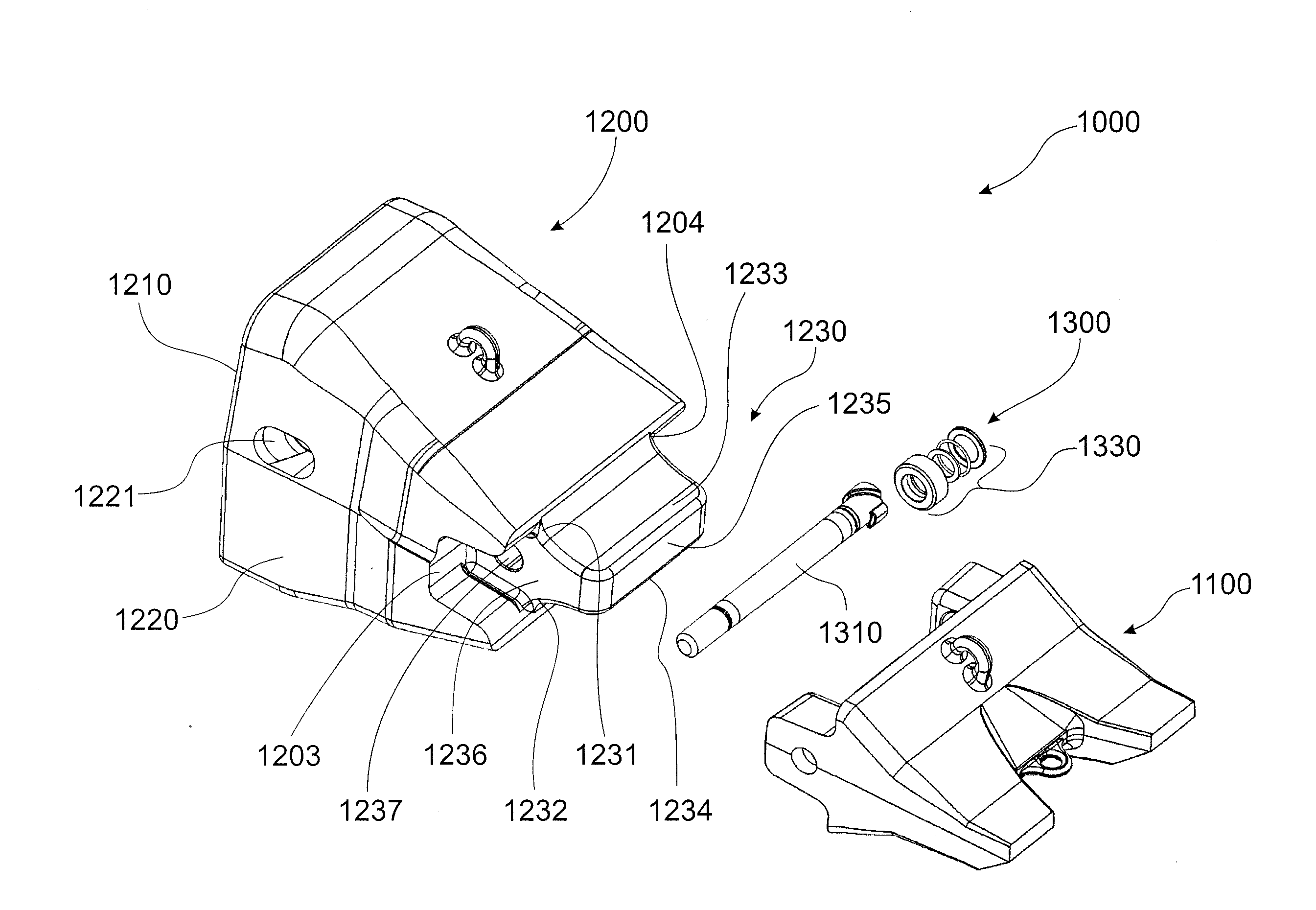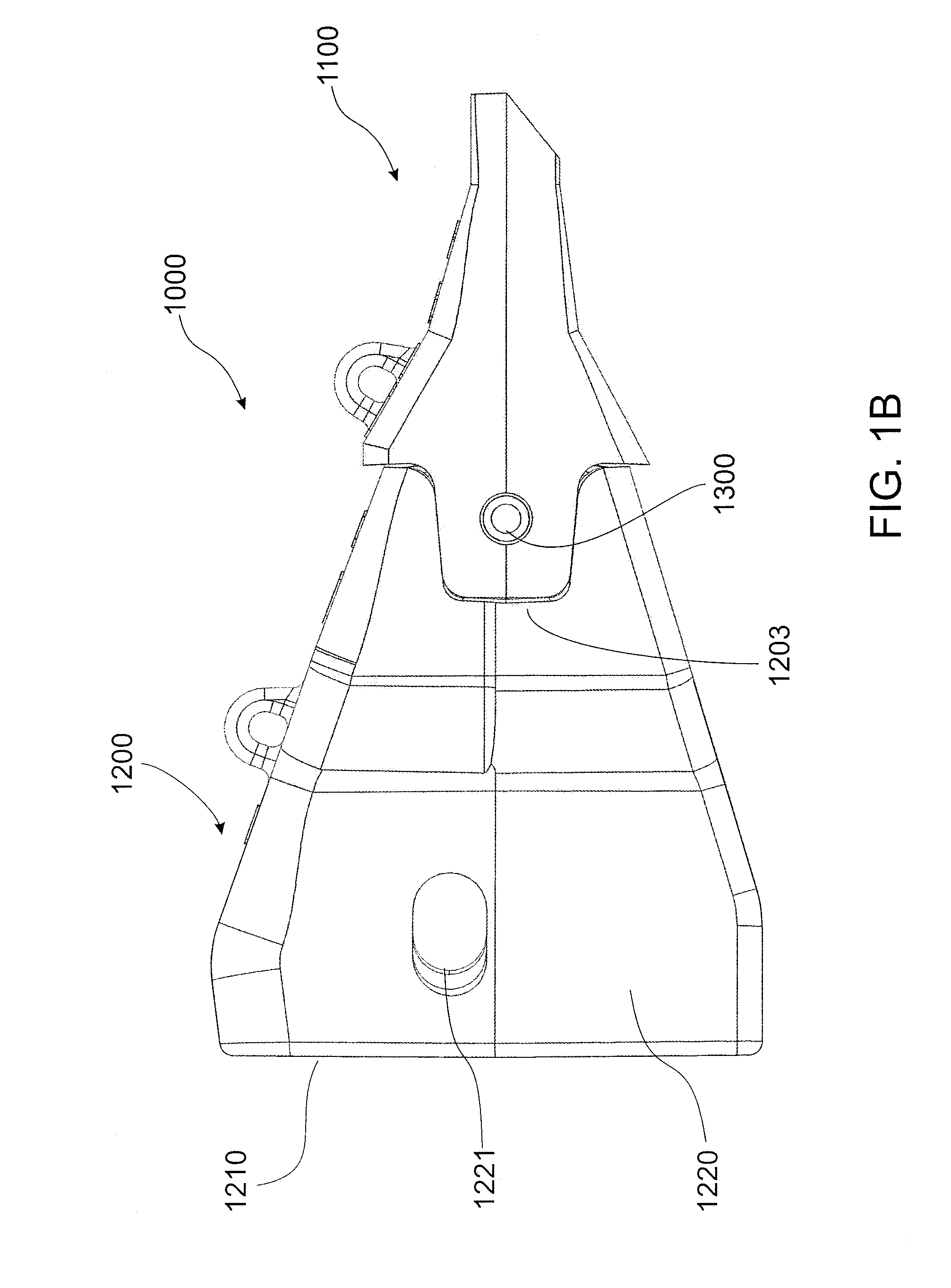Excavator wear assembly
a technology for excavators and tooth assemblies, applied in the field of excavators, can solve the problems of increasing the risk of losing a digging point or an entire adaptor/tooth combination, damage and/or further downtime, and imposing twisting or “yaw” loads on such tooth assemblies
- Summary
- Abstract
- Description
- Claims
- Application Information
AI Technical Summary
Benefits of technology
Problems solved by technology
Method used
Image
Examples
Embodiment Construction
[0112]The excavator wear assembly and lock assembly are described with reference to an excavator wear member in the form of a tooth releasably secured to an adaptor. The adaptor is in turn secured to a nose of an excavator bucket or the like. A skilled addressee will appreciate that the invention may be employed to releasably secure an adaptor to a nose or a tooth directly to a nose of an excavator bucket lip and the like. Furthermore, the lock assembly may be utilised in other applications such as a retaining pin for components in dragline excavator rigging and the like.
[0113]FIG. 1A shows a perspective view of an excavator wear assembly 1000 according to an embodiment of the invention in the locked position. FIG. 1B shows a side elevation view of the excavator wear assembly 1000. FIG. 1C shows an exploded perspective view of the excavator wear assembly 1000 which is effectively in an unlocked position. Excavator wear assembly 1000 comprises a wear member in the form of a tooth 110...
PUM
| Property | Measurement | Unit |
|---|---|---|
| resilient | aaaaa | aaaaa |
| radial width | aaaaa | aaaaa |
| circumference | aaaaa | aaaaa |
Abstract
Description
Claims
Application Information
 Login to View More
Login to View More - R&D
- Intellectual Property
- Life Sciences
- Materials
- Tech Scout
- Unparalleled Data Quality
- Higher Quality Content
- 60% Fewer Hallucinations
Browse by: Latest US Patents, China's latest patents, Technical Efficacy Thesaurus, Application Domain, Technology Topic, Popular Technical Reports.
© 2025 PatSnap. All rights reserved.Legal|Privacy policy|Modern Slavery Act Transparency Statement|Sitemap|About US| Contact US: help@patsnap.com



